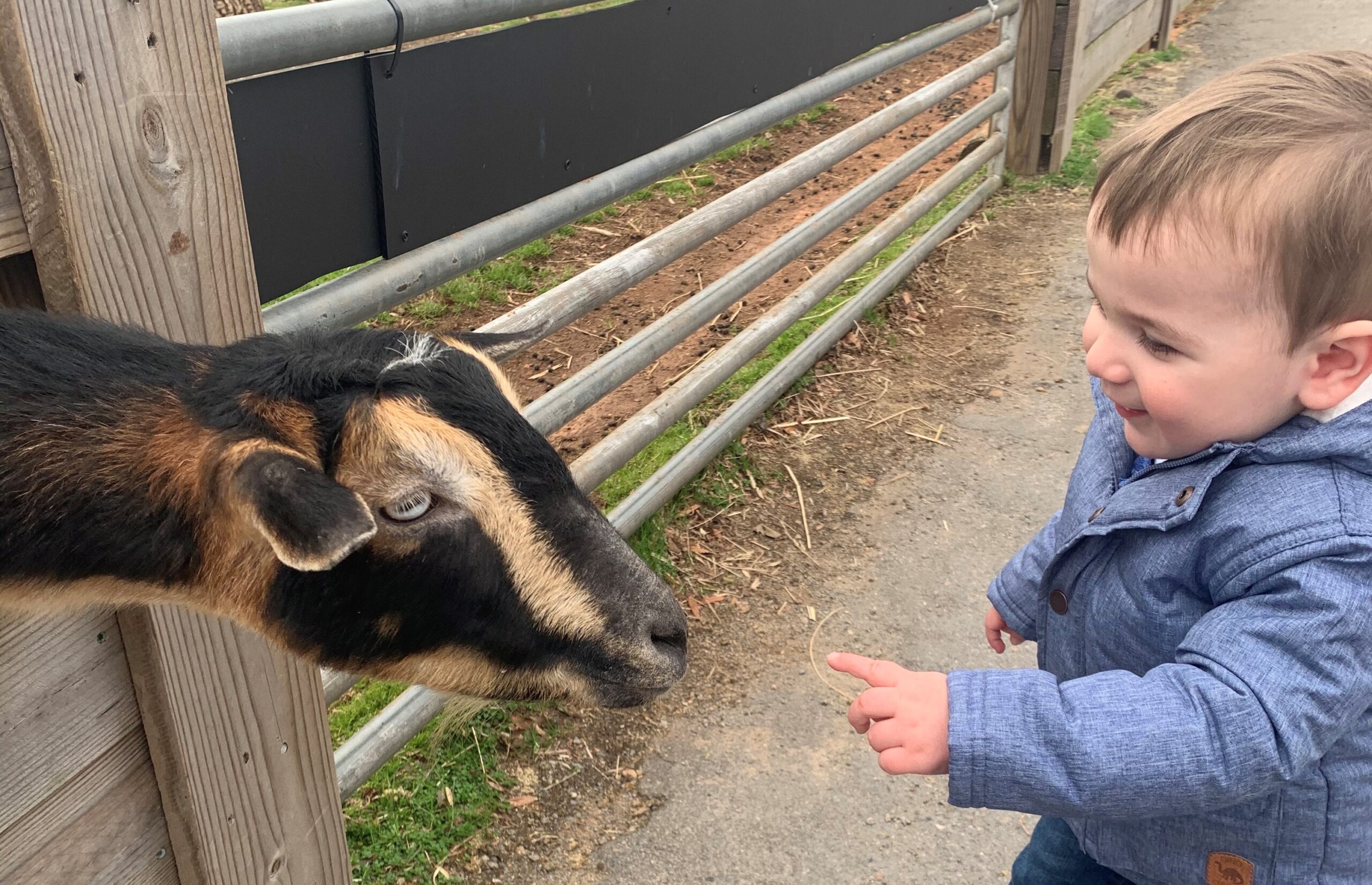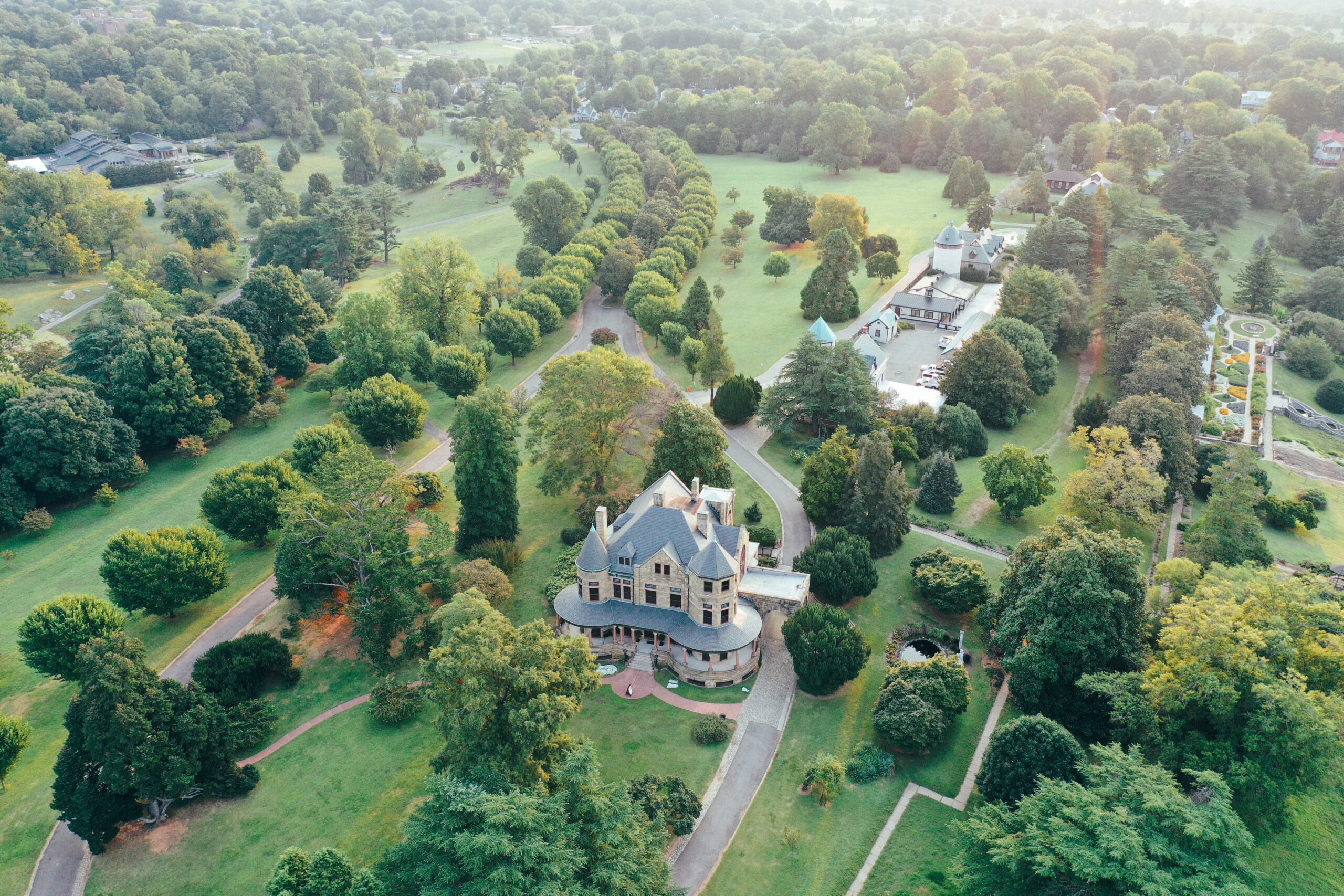
Maymont helps maintain a considerable amount of animals, housed in a number of habitats, a farm area and the Robins Nature Center. (Photos courtesy of The Maymont Foundation)
As it continues to bounce back from the darkest days of the pandemic, Maymont has just landed a windfall from a federal recovery program.
The nonprofit, which oversees the historic city estate, received an $8 million grant last month from the U.S. Department of Commerce’s Economic Development Administration. The money will go toward expanding the park’s wildlife habitats and upgrading the Maymont mansion.
The funding, part of the American Rescue Plan Travel, Tourism and Outdoor Recreation program, aims to facilitate recovery for tourism across the country. The national program is a $750 million project, with $240 million allocated toward competitive grants, according to the EDA’s website.
“I think Maymont’s sort of perennial ranking as a top tourist attraction in Richmond really helped our cause, as did a lot of the local and state officials and tourism authorities who sent letters of support,” said Melissa Abernathy, Maymont’s communication manager.
The foundation’s nonprofit status made it eligible for the competitive grant. As required by the program, it will have to raise an additional $2 million typically achieved through donations and fundraising events.

The 100-acre park contains a number of attractions, including historic estate buildings and gardens.
Though the specifics will be decided on in the coming months, Abernathy said that much of the funding will be used to grow out the park’s habitat section. The foundation sustains 400 animals, housed in its sanctuaries, its farm and the Robins Nature Center, according to a three-year-old 990 form.
Animals residing in the park are rescues that cannot be released back into the wild and are instead taken care of by professional staff.
Meanwhile, the estate’s 12,000-square-foot mansion will also undergo a facelift. Abernathy said that the funds will pay for new roofing, with the foundation looking to bring back its original look. HVAC and fire safety systems also will be upgraded inside.
Though the mansion is once again open to the public for a fee, both it and the Robins Nature Center had to close during the pandemic. The organization could not host its regular events, making fundraising efforts difficult. Maymont saw a revenue decline of 80 percent in the first quarter of the pandemic and laid off 28 percent of its staff during that time, according to a Richmond Times Dispatch article from June.
“While (the mansion and center) were closed, it really did impact our budget. But you know, on the other hand, we are a public space,” Abernathy said. “We were able to keep open and keep enough staff to maintain the garden and take care of animals.”

Visitors can view antique items left behind by the Dooleys, who were the original owners of the estate.
Two years later, the organization’s recovery is well underway. Abernathy said the park saw a spike in visitors last year, reaching 850,000. Similarly, a record number of people have participated in its recent events, such as the Dominion Energy Family Easter in April, with 10,000 visitors taking part, she said.
Maymont has now returned to a staff of 53, she said, just shy of its headcount of 56 full-time workers pre-pandemic. Similarly, its current part-time staff of 24 is nearing pre-pandemic levels, when there were 33 part-time workers.
In 2020, Maymont received a $1 million grant from the Commonwealth of Virginia, investing it in the development of six new self-guided audio tours and the refurbishment of the Stone Barn, a 1908 structure that will house the park’s Welcome Center and a new classroom, come September.
Abernathy says the expansion will allow for new school programs to be offered to students.
According to the foundation’s website, the estate had its start in 1893 as a 100-acre property owned by James and Sally Dooley and was donated to the city upon their death.

Maymont helps maintain a considerable amount of animals, housed in a number of habitats, a farm area and the Robins Nature Center. (Photos courtesy of The Maymont Foundation)
As it continues to bounce back from the darkest days of the pandemic, Maymont has just landed a windfall from a federal recovery program.
The nonprofit, which oversees the historic city estate, received an $8 million grant last month from the U.S. Department of Commerce’s Economic Development Administration. The money will go toward expanding the park’s wildlife habitats and upgrading the Maymont mansion.
The funding, part of the American Rescue Plan Travel, Tourism and Outdoor Recreation program, aims to facilitate recovery for tourism across the country. The national program is a $750 million project, with $240 million allocated toward competitive grants, according to the EDA’s website.
“I think Maymont’s sort of perennial ranking as a top tourist attraction in Richmond really helped our cause, as did a lot of the local and state officials and tourism authorities who sent letters of support,” said Melissa Abernathy, Maymont’s communication manager.
The foundation’s nonprofit status made it eligible for the competitive grant. As required by the program, it will have to raise an additional $2 million typically achieved through donations and fundraising events.

The 100-acre park contains a number of attractions, including historic estate buildings and gardens.
Though the specifics will be decided on in the coming months, Abernathy said that much of the funding will be used to grow out the park’s habitat section. The foundation sustains 400 animals, housed in its sanctuaries, its farm and the Robins Nature Center, according to a three-year-old 990 form.
Animals residing in the park are rescues that cannot be released back into the wild and are instead taken care of by professional staff.
Meanwhile, the estate’s 12,000-square-foot mansion will also undergo a facelift. Abernathy said that the funds will pay for new roofing, with the foundation looking to bring back its original look. HVAC and fire safety systems also will be upgraded inside.
Though the mansion is once again open to the public for a fee, both it and the Robins Nature Center had to close during the pandemic. The organization could not host its regular events, making fundraising efforts difficult. Maymont saw a revenue decline of 80 percent in the first quarter of the pandemic and laid off 28 percent of its staff during that time, according to a Richmond Times Dispatch article from June.
“While (the mansion and center) were closed, it really did impact our budget. But you know, on the other hand, we are a public space,” Abernathy said. “We were able to keep open and keep enough staff to maintain the garden and take care of animals.”

Visitors can view antique items left behind by the Dooleys, who were the original owners of the estate.
Two years later, the organization’s recovery is well underway. Abernathy said the park saw a spike in visitors last year, reaching 850,000. Similarly, a record number of people have participated in its recent events, such as the Dominion Energy Family Easter in April, with 10,000 visitors taking part, she said.
Maymont has now returned to a staff of 53, she said, just shy of its headcount of 56 full-time workers pre-pandemic. Similarly, its current part-time staff of 24 is nearing pre-pandemic levels, when there were 33 part-time workers.
In 2020, Maymont received a $1 million grant from the Commonwealth of Virginia, investing it in the development of six new self-guided audio tours and the refurbishment of the Stone Barn, a 1908 structure that will house the park’s Welcome Center and a new classroom, come September.
Abernathy says the expansion will allow for new school programs to be offered to students.
According to the foundation’s website, the estate had its start in 1893 as a 100-acre property owned by James and Sally Dooley and was donated to the city upon their death.
“Maymont has just landed a windfall from a federal recovery program.”
Now, multiply this times the number of similar attractions (receiving “windfalls”) across the country, then add all the other “stimulus money” handed out the past two years. And that’s why we have price inflation in the double digits. My dad used to tell be that money doesn’t grow on trees, but, unfortunately, my dad was not familiar with the Federal Reserve (our trusty money printing machine).
Every time someone from out of state visits Richmond and Maymont, a Richmond business gets paid and the City and State collect tax revenue. Our current inflation is not related to stimulus money. Many of our global partners are experiencing inflation at levels at or above that of the US, and nobody gave them a stimulus check.
Amen.